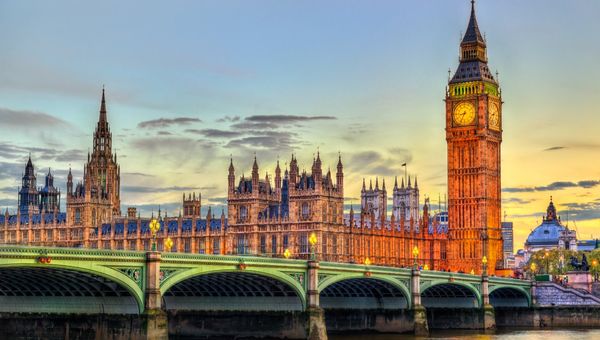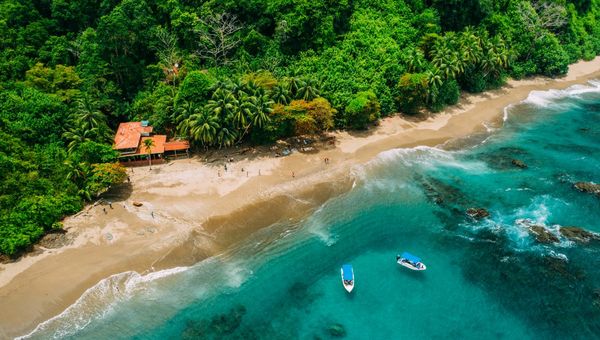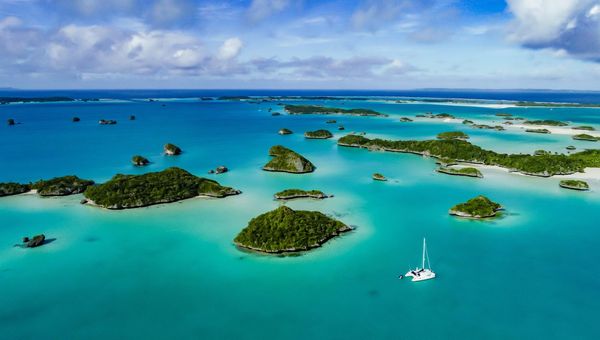Visitors are realizing that traveling can go beyond summer trips and the hot weather, crowds and higher prices that go with them. Bookings for travel off-season — including expectations for first quarter 2025, secondary destinations and counter-seasonal destinations — are increasing, according to travel advisors, tour operators and tourism boards. Virtuoso research of its luxury travel advisors released in mid-August confirms this trend. “Travel to off-the-beaten-path destinations and at off-peak times is growing in popularity,” according to the findings.
“I think travelers are disenchanted with the high prices and huge crowds during the summer travel season,” says Kathryn Schutz, founder and president of Kathryn Theodore Travel, a subsidiary of Departure Lounge, which is a Virtuoso agency in Atlanta. She adds that the benefits of off-season travel include more authentic experiences. “The locals are friendlier, service is better and there are more opportunities to truly experience the destination,” she says.
Daniela Harrison, travel advisor & director of marketing at Avenues of the World Travel, a Signature Travel agency in Flagstaff, Ariz., agrees with Schutz and says her business has “seen more clients travel off season this year, as well as with bookings for 2025.” She adds: “Travelers know how crowded certain destinations can get in high season and are more willing to trade in weather for less crowds. Also, since COVID, more people are able to work on hybrid models or are now working entirely remote. This allows them to travel during times that have been impossible in previous years.”
Gina Bang, chief sales and marketing officer of Avanti Destinations, says independent travelers vacationing during shoulder or “low” winter season “have the opportunity to see more of the Europeans’ Europe.” She adds: “In January, you will see more Italians in Florence than tourists, more French people than tourists in Paris, more Czechs than tourists in Prague – you name it. And in the fall, winter, and spring in Europe, you have the full cultural calendar of theater, concerts, opera and ballet in Europe – another great reason to travel October through March.”
Avanti began encouraging off-season travel in 2017 with the launch of its Go365 campaign providing recommended itineraries that take advantage of the seasons. Their offerings feature sightseeing tours and experiences such as cooking classes, wine tasting and soft adventure activities in locations around the world. “Examples include winter travel to enjoy winter sports, Christmas markets and winter holidays in Europe. Or, conversely, escapes to warm weather locations when it’s cold in the U.S.,” she says.
European cities currently selling through Avanti for off-season travel include London, Paris, Florence, Madrid, Barcelona, Munich and Zurich, according to Bang.

Special deals make London a prime off-season destination.
VisitBritain reports that in the first quarter of 2024, visits from the U.S. rose to 913,900, a record for that time and up from 828,700 in 2023. Paul Gauger, executive vice president, The Americas, Australia & New Zealand for VisitBritain anticipates “continued strong interest from U.S. visitors for travel to the U.K. in the first quarter of 2025.” He adds: “Traveling to the U.K. in the early months offers unique benefits, such as fewer crowds and the chance to explore some of the country's most iconic sites and events at a more relaxed pace. There are also plenty of deals across Britain's attractions and accommodations, making this quarter the perfect time to explore Britain.”
Secondary Destinations
Garey Bell, luxury travel advisor for Protravel International in Westbury, N.Y., is seeing many secondary destinations selling for off-season travel, including Costa Rica which he says “is quickly becoming a primary destination.” He adds: “It’s appealing for those that want both beach and adventure.”
Rafael Soto Quirós, interim general manager for Institute Costa Rica Tourism (ICT), says Costa Rica continues to see a steady rise in the number of travelers it welcomes each first quarter, year after year. “While the warm weather appeals to those escaping the cold in the U.S. from January to March, what truly attracts so many visitors is Costa Rica's diverse range of experiences, its safety and its versatility,” he says. “It offers more than just a typical beach vacation, inviting travelers to explore its rich natural landscapes and vibrant cultural heritage.”

Costa Rica attracts off-season travelers with its combination of beach and adventure.
Counter-Seasonal Travel
Bang lists Latin America, Asia and the South Pacific among the counter-seasonal destinations “for off-peak season vacations where the weather is warmer than here at home.” She adds: “Instead of going to Florida for a beach vacation, why not recommend a warm weather escape to Thailand, the Philippines, Belize or Brazil? You can have your sunshine and beach time, but also experience another culture.”
Siripakorn Cheawsamoot, deputy governor for International Marketing – Europe, the Americas, Middle East, and Africa for Tourism Authority of Thailand (TAT), says that “U.S. visitors are expected to travel to Thailand in significant numbers during the first quarter of 2025, thanks to favorable weather, exciting events and strategic promotions.”

Thailand is a warm-weather alternative for visitors seeking relief from colder climates.
Cheawsamoot notes that the dry season in Thailand runs from November through March, “offering pleasant, cool temperatures ideal for beach vacations in the south and outdoor adventures in the north.” He adds that “several major events will enhance Thailand's appeal during this time,” including the third season of the television show The White Lotus, which was filmed in Thailand. He also notes that “Thailand is becoming increasingly popular among honeymooners and couples, particularly around Valentine’s Day. The Lunar New Year also draws visitors looking to experience the cultural festivities.”
Australia is another counter-seasonal destination with an average of half of all U.S. travelers to Australia arriving between December and March, with expectations that 2025 will be the same, says Chris Allison, vice president of The Americas for Tourism Australia.
“January, February, and March is the peak travel season when it comes to U.S. visitors to Australia,” says Allison. “These are Australian summer months, so the U.S. traveler can escape to warmer weather and take full advantage of Australia’s spectacular beaches and relaxed outdoor lifestyle.”
Tourism Australia’s Consumer Demand Project (CDP), a monthly research project aimed at better understanding U.S. travelers, including what’s most important to them when selecting a vacation destination, shows that “appealing climate or weather” is one of the top drivers for U.S. travelers, says Allison. Research also notes that “the U.S. traveler is after a safe and secure destination, value for money and good food and drink,” he says.
In New Zealand, U.S. indirect bookings for December 2024 to February 2025 made through trade channels rather than directly through airlines are currently up 21 percent compared to the same period last year, according to Sarah Handley, general manager Americas & Europe for Tourism New Zealand. She adds that March is the beginning of the fall shoulder season in New Zealand. “We’ve seen a rapid growth in interest and arrivals for this time of year,” say Handley. “Arrivals in March 2024 were up 38 percent, compared with a year ago.”
Fiji is also seeing an increase in travel from the U.S. for the first quarter of 2025, according to Brent Hill, CEO of Tourism Fiji. He credits Fiji Airways’ new nonstop route from Dallas to Nadi set to begin Dec. 10 as playing a big role in that boost in bookings. “[It] will bring us to five nonstop routes from North America to Fiji: Dallas, Los Angeles, San Francisco, Vancouver and Honolulu.”

New, nonstop air routes from North America to Fiji encourages shoulder-season exploration.
Hill notes that “while January is traditionally a shoulder season for us, there are many reasons for Americans to book a trip to Fiji including taking advantage of lower airfares and resort rates, lower occupancy at popular hotels, and that travelers can escape the cold of the Northern Hemisphere winter to enjoy Fiji’s year-round tropical weather.”